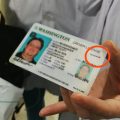
Asian art lovers finally got to revisit the Smithsonian’s Freer Gallery of Art after its 18-month closure for renovation.
“This place enables us to provide both a temple for contemplation and a theater for the imagination,” said Julian Raby, director of the Freer and Sackler Galleries. “We are now reopening after several years, and what began as a prosaic need to update mechanical systems in the Freer allowed us to reinstate this building to Freer’s pristine vision.”
To mark the reopening, the Freer and its sister museum, the Arthur M. Sackler Gallery, hosted the IlluminAsia Festival with the theme “Where Asia Meets America” – two galleries, one destination.
The festival featured a nighttime video projection on the façade of the Freer, music by the Grammy Award-winning Silkroad Ensemble and an outdoor Asian food market.
Founded in 1923 to house the collection of Detroit industrialist Charles Lang Freer, the Freer Gallery was the Smithsonian’s first art museum, and has maintained an emphasis on the relationship between Asian and American art.
The Freer was joined by the Sackler Gallery in 1987. Today, the museum offers exhibitions that highlight the beauty of ancient worlds as well as the vitality of contemporary Asian artists. Besides Asian art, the Freer also houses a collection of 19th- and early 20th-century American works.
The Freer Gallery has been closed since January 2016 to revitalize its galleries, upgrade its infrastructure and technological systems and mount new exhibitions drawn from its substantial collection.
Since only a small percentage of the gallery’s holdings are on view at any given time, selections of light-sensitive paintings and objects are rotated regularly. The new exhibitions of Chinese art include paintings, calligraphies and ceramics that have never been displayed before.
“Our collection is exceptionally rich covering the whole range of Chinese history,” said Jan Stuart, curator of Chinese art. “We have an ancient jade collection that’s unparalleled; we have outstanding early bronzes; but we also have one of the strongest ceramic collections. We are also well-known for our Chinese paintings.”
The Chinese art department has around 2,000 paintings, 500 calligraphy works and hundreds of seals and rubbings, said Stephen D Allee, associate curator of Chinese paintings and calligraphy.
The Sackler Gallery also joined the reopening celebration with four new shows.
One of them, titled “Resound: Bells of Ancient China,” features more than 60 bells and noisemakers that span the entire length of the Chinese Bronze Age and explore the development of this important musical tradition.
Bells were among the first bronze objects made in China, beginning around 1600 B.C.E. Distinct musical cultures involving these instruments flourished simultaneously in north and south China, and cultural exchange accelerated advances in form and sound in both regions. The melodic use of tuned bells signals the technical sophistication of the later Chinese Bronze Age.
The bells included in the exhibition are largely drawn from the Sackler’s extensive collection and range in size from 1 inch to almost 3 feet in height; they reflect every major development in the evolution of ancient Chinese bell design and related musical practices.
Another new exhibition “Encountering the Buddha,” on view through October 2020, draws upon the Freer and Sackler collections of Buddhist art across several Asian countries and reveals how art and place are central to Buddhist understanding and teachings.
Yuan Yuan in Washington contributed to the story.


